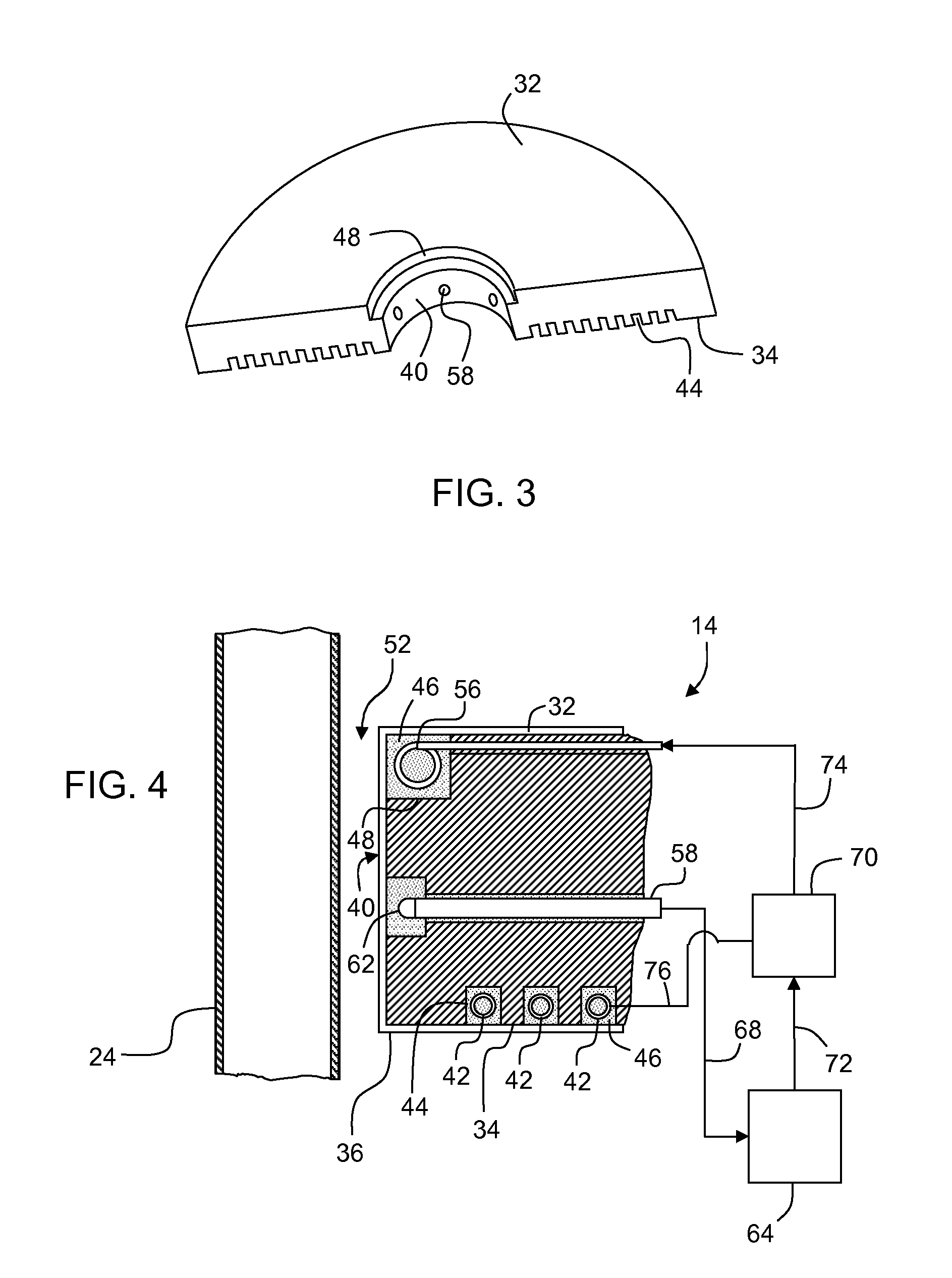Method and apparatus for homogenizing a glass melt
a technology of glass melt and homogenizing glass, which is applied in the field of reducing contaminants in glass melt, can solve the problems of inclusion or blister defects in glass products, difficult to control the temperature of glass free surfaces, and stratification of condensation
- Summary
- Abstract
- Description
- Claims
- Application Information
AI Technical Summary
Benefits of technology
Problems solved by technology
Method used
Image
Examples
Embodiment Construction
[0020]FIG. 1 illustrates an exemplary apparatus for practicing a method for homogenizing a glass melt according to an embodiment of the present invention. Stirring apparatus 10 of FIG. 1 includes stirring vessel 12, stirring vessel cover 14 and stirrer 16.
[0021]Stirring vessel 12 is preferably cylindrically-shaped and substantially vertically-oriented, although the stirring vessel may have other shapes and orientations as needed. Preferably, the stirring vessel includes inner surface 18 comprising platinum or a platinum alloy. Other materials having resistance to high temperature, including resistance to corrosion, as well as electrical conductivity, may be substituted. For example, suitable metals for forming inner surface 18 can include other platinum group metals such as rhodium, iridium, palladium, ruthenium, osmium and alloys thereof. Stirring vessel 12 comprises molten glass inlet pipe 20 located at or near the top of stirring vessel 12 and molten glass outlet pipe 22 located ...
PUM
| Property | Measurement | Unit |
|---|---|---|
| temperature | aaaaa | aaaaa |
| temperature | aaaaa | aaaaa |
| Chemical | aaaaa | aaaaa |
Abstract
Description
Claims
Application Information
 Login to View More
Login to View More - R&D
- Intellectual Property
- Life Sciences
- Materials
- Tech Scout
- Unparalleled Data Quality
- Higher Quality Content
- 60% Fewer Hallucinations
Browse by: Latest US Patents, China's latest patents, Technical Efficacy Thesaurus, Application Domain, Technology Topic, Popular Technical Reports.
© 2025 PatSnap. All rights reserved.Legal|Privacy policy|Modern Slavery Act Transparency Statement|Sitemap|About US| Contact US: help@patsnap.com



